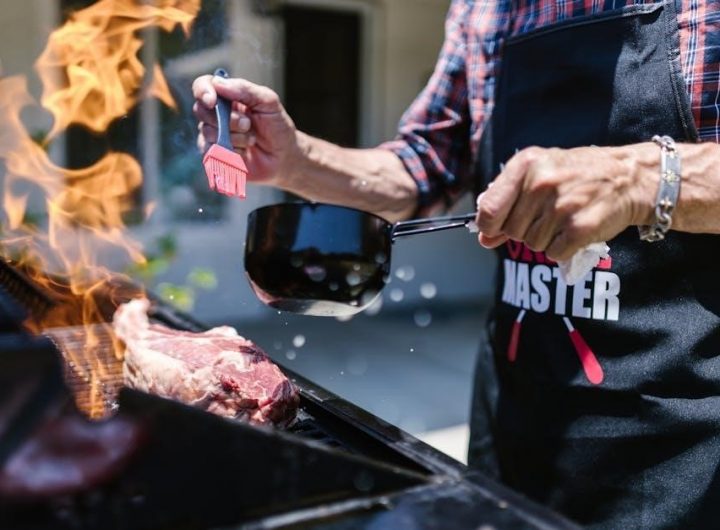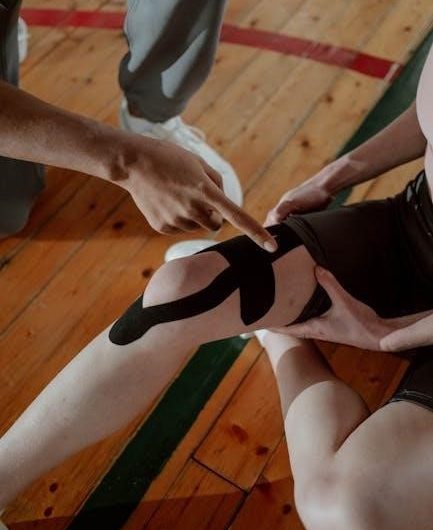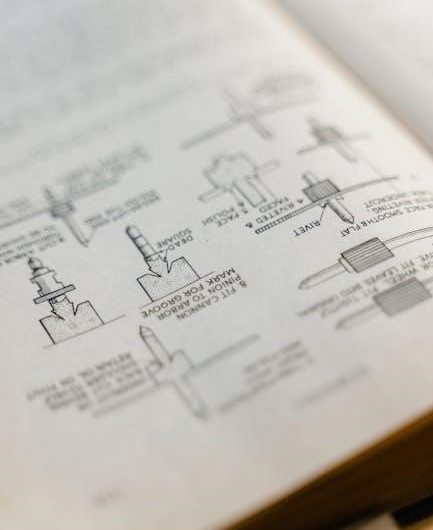
Lomi Lomi massage is an ancient Hawaiian technique emphasizing holistic healing through compassionate touch. It combines flowing strokes, natural oils, and spiritual elements to rejuvenate body and mind.
1.1 Origins and Historical Background
Lomi Lomi massage originates from ancient Hawaii, deeply rooted in Polynesian traditions and spirituality. It was historically practiced in temples as a holistic healing ritual, combining physical techniques with spiritual chants and prayers. This traditional practice was passed down through generations of Hawaiian healers, known as kahuna, who believed in balancing the body, mind, and spirit. Its philosophy is tied to the Huna principles of harmony and Ho’oponopono, emphasizing unity and healing.
1.2 Cultural Significance in Hawaiian Tradition
Lomi Lomi holds profound cultural significance in Hawaiian tradition, reflecting the islands’ spiritual and holistic worldview. It is deeply tied to Hawaiian values of aloha (love) and maluhia (peace), often used in rituals and ceremonies to promote harmony and balance. This traditional practice embodies the Hawaiian belief in interconnectedness, making it a cherished part of their identity and heritage, both historically and in modern times.
Key Elements of Lomi Lomi Massage
Lomi Lomi combines flowing strokes, natural oils, and spiritual intent. It emphasizes continuous, rhythmic movements, incorporating forearms, elbows, and hands to create a dance-like experience, promoting deep relaxation and connection.
2.1 Techniques and Methods
Lomi Lomi employs flowing, rhythmic strokes, pressure points, and joint mobilization. Techniques involve using hands, forearms, elbows, and knees to apply pressure. The massage incorporates breathing exercises and dance-like movements, creating a harmonious flow. Long, continuous strokes promote relaxation, while gentle stretching enhances flexibility. This holistic approach fosters deep tissue release and emotional balance, making it a unique and therapeutic experience.
2.2 Use of Oils and Natural Products
Lomi Lomi massage traditionally uses natural oils, such as macadamia or coconut oil, to reduce friction and allow smooth, gliding strokes. These oils are often fragrant and nourishing, enhancing relaxation. Natural products like nut oils or herbal infusions may also be incorporated to promote skin health and deepen the therapeutic experience, aligning with the massage’s holistic principles.
2.3 Incorporation of Breathing and Movement
Lomi Lomi incorporates deep breathing techniques to promote relaxation and energy flow. The “Ha breath” helps the client release tension and connects the practitioner’s intent with the massage. Smooth, dance-like movements, including flowing strokes and rhythmic pressure, are used to work through the body, creating a harmonious connection between physical touch and spiritual renewal. This blend enhances the therapeutic experience.
Benefits of Lomi Lomi Massage
Lomi Lomi promotes physical relaxation, emotional balance, and spiritual renewal. It eases muscle tension, improves circulation, and supports overall well-being, fostering a deep sense of harmony and healing.
3.1 Physical Healing and Relaxation
Lomi Lomi’s flowing strokes and deep pressure techniques enhance circulation, reduce muscle tension, and relieve pain. The use of oils and rhythmic movements promotes deep relaxation, easing physical discomfort while rejuvenating the body’s energy flow and flexibility, making it an effective therapy for overall physical well-being and recovery.
3.2 Emotional and Spiritual Renewal
Lomi Lomi fosters emotional release and spiritual balance by combining compassionate touch with breathing techniques. It promotes inner peace, reconnecting body, mind, and spirit. This holistic approach helps heal emotional blockages, restore harmony, and rejuvenate the soul, offering a profound sense of renewal and spiritual awakening through its deeply nurturing and intentional practice.
Preparation for a Lomi Lomi Session
Preparation involves creating a serene atmosphere with oils and warm temperatures. Clients should wear loose, comfortable clothing and mentally prepare for the session. Proper intention and grounding are essential for a meaningful experience.
4.1 Creating a Comfortable Environment
Creating a comfortable environment involves setting up a serene and calming space with soft lighting, soothing music, and a warm temperature. Use traditional oils like macadamia or coconut oil to enhance the experience. Ensure privacy and a clean, quiet area for relaxation. Proper intention and grounding by the therapist are essential to create a healing atmosphere. A peaceful ambiance allows clients to deeply relax and connect with the session.
4.2 Client Preparation and Etiquette
Client preparation involves arriving 10-15 minutes early, wearing comfortable clothing, and refraining from heavy meals. Etiquette includes respecting personal space, communicating discomfort, and honoring boundaries. Clients should inform therapists of injuries or sensitivities. Maintaining confidentiality and creating a safe, non-judgmental space is crucial. Proper draping and hygiene practices ensure a professional and respectful experience for both client and therapist. Hydration post-session is recommended.
Essential Techniques and Strokes
Lomi Lomi employs flowing strokes, pressure points, and rhythmic movements. Techniques include using forearms, elbows, and hands in a dance-like motion, ensuring continuous, deep tissue engagement for optimal relaxation and healing.
5.1 Long, Flowing Strokes and Pressure Points
Lomi Lomi features long, flowing strokes that glide across the body, promoting deep relaxation. Pressure points are incorporated to release tension, while rhythmic movements create a dance-like experience. This technique ensures continuous engagement of muscles, improving circulation and energy flow, fostering a harmonious balance between physical and emotional well-being.
5.2 Joint Mobilization and Stretching
Lomi Lomi incorporates gentle joint mobilization and stretching to enhance flexibility and alignment. Techniques involve soft rotations and elongations of the limbs, improving range of motion while relaxing muscles. This approach is combined with flowing strokes, creating a harmonious balance between movement and relaxation, which aids in releasing physical tension and fostering overall well-being.

Tools and Materials Used
Lomi Lomi typically uses natural oils like coconut or macadamia oil for smooth strokes and traditional massage tables for client comfort. Some practitioners incorporate stones or shells for added therapeutic benefits.
6.1 Traditional Oils and Lubricants
Traditional Hawaiian oils, such as coconut, macadamia, and kukui nut oil, are commonly used in Lomi Lomi massage. These oils are valued for their nourishing and moisturizing properties, promoting smooth, gliding strokes during the session. They are often warmed and applied generously to enhance relaxation and create a soothing experience for the client.
6.2 Modern Tools and Accessories
Modern Lomi Lomi practice often incorporates tools like massage tables, heating pads, and specialized oils. Accessories such as rollers or brushes may enhance the experience. Additionally, spas offering Lomi Lomi typically provide amenities like steam rooms, saunas, and jacuzzis to complement the session, ensuring a holistic and rejuvenating experience for clients.

Step-by-Step Guide to Performing Lomi Lomi
A step-by-step Lomi Lomi session begins with grounding and intent, followed by flowing strokes, pressure points, and natural oils to rejuvenate the body and spirit;
7.1 Starting the Massage: Grounding and Intent
Begin with grounding techniques to center your energy and set a healing intent. Apply a small amount of oil to your hands, then gently place them on the client’s body. Use deep, conscious breathing, such as the Ha breath, to connect with the client. This sacred space fosters trust and prepares both practitioner and receiver for the session ahead.
7.2 Working Through Key Body Areas
Begin with long, flowing strokes on the back, using forearms and elbows to apply pressure. Progress to the arms, neck, and shoulders, incorporating gentle joint mobilizations. Move to the legs, hips, and feet, ensuring continuous, rhythmic motions. Use palms and fingers for detailed work on areas like the hands and feet, promoting deep relaxation and alignment throughout the body.
7.3 Completion and Aftercare
Conclude the session with gentle, soothing strokes to calm the body. Allow the client to rest for a few moments in a peaceful environment. Encourage hydration and suggest avoiding strenuous activities for the remainder of the day. Provide a comfortable space for the client to slowly return to awareness, ensuring they feel grounded and refreshed.
Advanced Techniques and Variations
Advanced Lomi Lomi incorporates temple-style methods, dance-like movements, and spiritual elements, enhancing the therapeutic experience and deepening the connection between practitioner and client.
8.1 Temple-Style Lomi Lomi Techniques
Temple-style Lomi Lomi is an advanced, deeply therapeutic approach rooted in ancient Hawaiian spiritual practices. It combines flowing strokes, pressure points, and rhythmic movements, often incorporating prayer and breathwork. Practitioners use hands, forearms, and elbows to apply pressure, promoting deep relaxation and healing. This method is known for its intensity and holistic focus on balancing body, mind, and spirit.
8.2 Incorporating Dance and Movement
Incorporating dance and movement into Lomi Lomi enhances its therapeutic benefits. Practitioners use flowing strokes, rhythmic patterns, and continuous motion, resembling a dance. This fluid approach promotes deep relaxation, aligns energy, and fosters a harmonious connection between giver and receiver. Movement is integral to the technique, creating a seamless, meditative experience that nurtures both body and spirit.

Safety and Contraindications
Lomi Lomi is generally safe but has contraindications. Conditions like recent injuries, chronic pain, or severe health issues may require precautions. Professional guidance ensures safe practice.
9.1 Identifying Suitable Clients
Lomi Lomi is suitable for most individuals seeking relaxation or healing, but certain conditions like severe injuries, chronic pain, or serious health issues may require caution. Clients with medical concerns should consult their healthcare provider before booking a session. Practitioners must assess client suitability to ensure safe and effective treatment, adapting techniques to meet individual needs while respecting physical and emotional boundaries.
9.2 Avoiding Injuries and Discomfort
To prevent injuries during Lomi Lomi, practitioners should use proper techniques, maintain clear communication with clients, and avoid excessive pressure. Ensuring the client is comfortable and relaxed is crucial. Using appropriate oils or lubricants helps reduce friction, preventing skin irritation. Attention to client feedback and adjusting pressure accordingly minimizes discomfort, promoting a safe and therapeutic experience.
Training and Certification
Find a reputable instructor for comprehensive Lomi Lomi training, covering techniques, philosophy, and hands-on practice. Certification ensures mastery and professional practice, honoring traditional methods.
10.1 Finding a Reputable Instructor
To master Lomi Lomi, seek instructors with deep knowledge of Hawaiian traditions and hands-on experience. Look for certifications from recognized schools or experienced practitioners. Ensure they emphasize both technical skills and the spiritual essence of the practice. Research reviews, ask for referrals, and observe their teaching style to ensure alignment with authentic Lomi Lomi principles and methodologies.
10.2 Path to Mastery and Professional Practice
Mastery of Lomi Lomi requires continuous learning, practice, and dedication. Gain hands-on experience through workshops and apprenticeships under certified instructors. Combine technical skills with spiritual understanding to embody the practice fully. Obtain proper certification and adhere to ethical standards. Build a loyal client base by delivering exceptional care and staying committed to ongoing education and professional growth.
Marketing and Growing Your Practice
Effectively promote your Lomi Lomi services through online platforms, SEO, and social media. Build trust with client reviews and referrals. Collaborate with local wellness centers and spas to expand your reach and establish a loyal client base.
11.1 Promoting Your Services Effectively
Highlight your unique offerings with special promotions, such as a 25% discount on first sessions. Leverage social media platforms like Instagram and Facebook to share engaging content, including high-quality images and videos of your techniques. Use SEO strategies to optimize your website for keywords like “best Lomi Lomi near me.” Showcase client testimonials and success stories to build trust. Partner with local yoga studios and wellness centers to expand your reach and attract new clients. Consider offering free introductory sessions to introduce potential clients to your work.
11.2 Building Client Relationships
Building strong client relationships is key to a thriving practice. Focus on trust and open communication, ensuring clients feel valued and understood. Offer personalized service, follow up after sessions, and involve clients in decision-making. Recognize milestones and offer occasional discounts to foster loyalty. These efforts create lasting connections and a loyal client base.

The Future of Lomi Lomi Massage
Lomi Lomi continues to evolve, blending ancient traditions with modern wellness practices. Its global popularity grows, offering therapeutic benefits and spiritual renewal to diverse audiences worldwide.
12.1 Modern Adaptations and Innovations
Modern adaptations of Lomi Lomi integrate contemporary tools and techniques while preserving its traditional essence. Practitioners now use innovative tools like heated stones and suction therapy alongside classic methods. Online training platforms and virtual sessions are making Lomi Lomi more accessible globally. Additionally, therapists are blending Lomi Lomi with other modalities, such as yoga and energy work, to enhance its therapeutic benefits. This evolution ensures its relevance in today’s wellness landscape while maintaining its spiritual roots and holistic approach to healing. The focus on sustainability in product choices, such as eco-friendly oils, further aligns with modern values, appealing to a broader audience seeking natural and ethical wellness practices.
12.2 Preserving Traditional Practices
Efforts to preserve Lomi Lomi’s traditional practices include workshops taught by Hawaiian elders and cultural programs emphasizing its spiritual roots. Many therapists pursue certifications in temple-style techniques to honor its origins. The use of natural oils and prayer remains central, ensuring the integrity of this ancient art. Community initiatives and cultural exchanges further safeguard its heritage for future generations.
 banquet salisbury steak cooking instructions
banquet salisbury steak cooking instructions  resident alien instruction manual
resident alien instruction manual  baby trend car seat instructions
baby trend car seat instructions  smartfridge mini instructions
smartfridge mini instructions  wilton cake pan instructions pdf
wilton cake pan instructions pdf  brother ls2125i instruction manual
brother ls2125i instruction manual  king of the underworld rj kane pdf
king of the underworld rj kane pdf  merlin home transmitter manual
merlin home transmitter manual  contrat de sous-location québec pdf
contrat de sous-location québec pdf  mark cousins the story of film pdf
mark cousins the story of film pdf